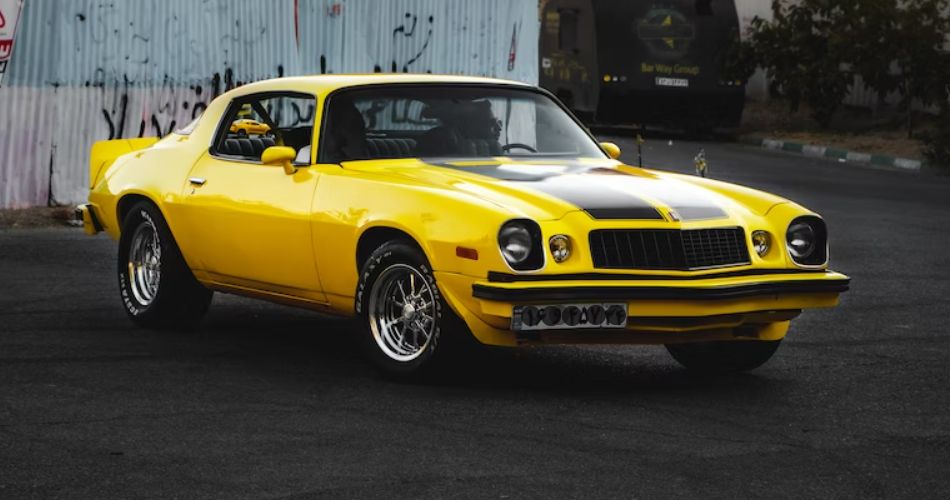Purchase a Vintage or Modern Muscle Car
You probably have your sights set on a muscle car if you’ve ever fantasized about having one of those fast, slick, and high-performance cars from high-speed auto chase movies; many of them can accelerate from zero to 60 miles per hour in a matter of seconds.

This level of performance was not attained overnight, as is well known. Muscle cars have been meticulously improved throughout the previous several decades to get where they are today, from the more famous drag strip times of the 1970s to some of the quickest Fords, Dodges, and General Motors (GM) vehicles the world has ever seen. There is a great deal of discussion about newer models vs oldies in the high-horsepower world of muscle vehicles nowadays since each has advantages and disadvantages. This thorough advice might be useful if you’re attempting to decide between going traditional or contemporary.
Why Muscle Cars Are Great
Let’s define a muscle automobile first before comparing vintage and contemporary examples. What differentiates it from other vehicles?
Powerful, high-performance automobiles are referred to as “muscle cars.” Although there are differing views on what counts as a muscle car and what doesn’t, the term commonly describes cars with the following characteristics:
- doors, two
- Back-wheel drive
- small to average-sized body
- An enormous and potent eight-valve (V8) engine
Essentially little cars with loud, big engines are what muscle cars are most often. In contrast, most current automobiles often feature smaller, more fuel-efficient V6 or V4 engines with six or four valves per cylinder. The words “muscle car” and “fuel efficiency” are not frequently used together.
In the middle of the 1960s and the beginning of the 1970s, youthful drivers started to choose muscle vehicles. They were not just sleek, strong, and handsome, but also reasonably priced and adaptable. These vehicles may perform in legitimate or unofficial drag racing as well as regular street driving.
Reasons to Purchase a Classic Muscle Car
In their day, classic muscle vehicles were engineering marvels, much like contemporary muscle cars are now. These vintage automobiles are still owned by older auto enthusiasts because they primarily represent the pinnacle of freedom for the generation they were designed for.
Young automobile collectors also prefer older cars since they have a richer heritage and a more timeless appearance than more recent versions.
These magnificent vehicles quickly took control of the drag track. Due to their outstanding design at the time, Mopar’s range frequently produced winning automobiles. At many National Hot Rod Association (NHRA) competitions today, old muscle cars like the Charger, Chevelle, Challenger, and classic Mustangs are monsters. These are a few of the best vintage muscle vehicles.
1. 1967 Chevrolet Camaro Z/28
The 1967 Chevrolet Camaro Z/28, a renowned muscle vehicle in American history, was a special edition of the Camaro featuring power disc brakes, an improved suspension, and a 290 horsepower engine.
The façade has squared-off headlamps, an aggressive grille, and broad fenders to accommodate bigger tires on either side. The Z/28 was one of GM’s most potent motors at the time, capable of reaching peak speeds of more than 150 mph.
2. 1970 Chevrolet Chevelle SS 454
In order to compete with Chrysler’s array of muscle vehicles released during the same generation, GM created the Chevelle Super Sport (SS). The 1970 Chevy Chevelle SS 454 offered auto fans a muscle car that was ready for the drag strip right out of the factory. It had a 7.4-liter V8 LS6 engine that produced 450 horsepower and 500 pound-feet of torque.
In addition to being race-ready, the Chevelle SS 454 was a desirable choice due to its restricted manufacturing and varied appearance. In 1970, Chevy built just over 4,400 Chevelles with the LS6 454 engine. They came in a variety of body designs, including the coupe, convertible, and El Camino.
3. 1968 Ford Mustang GT500 KR
By 1968, the Mustang Shelby GT500 had already become well-known. Ford, however, intended to further differentiate itself from the American muscle car market by developing a more powerful GT500 model. In April 1968, it debuted the Mustang GT500 “King of the Road” (KR).
A 428-cubic-inch V8 Cobra Jet engine with a 335-horsepower and 440-pound-foot torque rating was fitted to the car. It could accelerate smoothly from 0 to 60 miles per hour in 6.5 seconds and complete a quarter mile in 14.8 seconds.
4. 1969 Dodge Charger R/T
The 1969 Dodge Charger R/T, one of the most well-known vintage muscle vehicles, has a 440 Magnum engine, a three-speed TorqueFlite automatic transmission, and 375 horsepower. Building on the appearance of the previous year’s model, this one has aesthetic improvements including redesigned taillights, a recessed grille that is separated vertically in the middle, and square safety reflectors.
Dodge also addressed security issues raised by the 1968 Charger by repositioning the door locks farther from the seam created by the two windows to reduce the likelihood of break-ins. Furthermore, the 1969 model year was the final one in which American automakers could create cars with an ignition key mounted on the dashboard rather than the steering column.
5. 1970 Dodge Challenger R/T
Car aficionados have lusted after the 1970 Dodge Challenger R/T for 50 years. Its value will only rise due to its amazing speed and design. The car’s V8 426 Hemi engine produces an average of 490 pound-feet of torque at 3,200 rpm and 390 horsepower at 4,700 rpm.
With a quarter-mile time of 13.7 seconds, it can reach 105 miles per hour. Along with these stats, the Challenger R/T’s peak speed was predicted to reach 146 mph. Even if it doesn’t appear to be moving very quickly right now, it was a formidable force in its day. If it’s kept up, a genuine Challenger from the ’70s will never go out of style.
6. 1963 Chevrolet Corvette Grand Sport
Given that it was the first Grand Sport in production, the 1963 Grand Sport stands out among the sea of rare Corvettes. The Ford Shelby Cobra and Mustang pony car had done a good job of representing America on the racing scene in the early 1960s. However, GM didn’t want to do anything and let Ford represent America alone.
The 1963 Corvette Grand Sport, which had a 377-cubic-inch all-aluminum V8 engine and 550 horsepower, was GM’s answer to the Cobra. To comply with international racing regulations, GM intended to produce 125 of these cars, but only five were ever built.
Due to its rarity, the 1963 Grand Sport is highly prized by classic muscle car collectors all over the world. The value of this exceedingly rare car ranges from $6 million to $8 million.
Pros and Cons of Classic Muscle Cars
After discussing some of the most well-known vintage models, let’s examine the principal advantages of having a vintage muscle car:
Aesthetic appeal: Since many modern automobiles share parts with one another, the majority of typical ones tend to look, feel, and drive similarly. The personality of a historic automobile, though, will undoubtedly rub off on you as well. You will certainly appear classy while driving because its style only gets better with time. When driving a classic automobile, be prepared to draw attention to yourself, respond to inquiries about your car, and maybe even be asked for a ride.
Appreciating value: Modern vehicles lose value as soon as you take them out of the dealership, whereas historic muscle cars retain their worth for as long as they are well-maintained and handled. Many collectors view American vintage automobiles as a novel investment strategy that will surely provide rewards in the ensuing years.
Drive feel: While modern vehicles strive to minimize noise, vibration, and harshness (NVH) levels, historic vehicles were created at a time when this was less of a concern. Your ears will like the sound of that exhaust note, and it can even give you shivers. When driving a vintage automobile, the journey is more important than the final destination since you are in more control of the vehicle and have a bigger part in the driving experience.
Emotional appeal: There are several reasons why someone would decide to acquire a classic automobile, including its vintage charm, timeless design, or nostalgic associations with bygone eras. The sentimental value of classic automobiles may sometimes overcome their high cost of acquisition and ongoing upkeep.
Here are some possible negative aspects of vintage muscle cars:
Safety issues: Because they weren’t made for the roads and speeds we drive on today, classic automobiles don’t meet modern safety regulations. Some vintage muscle vehicles lack crumple zones and seatbelts, which obviously raises questions about the safety of both drivers and passengers. Generally speaking, using a newer automobile for daily use or family transportation is safer. The majority of vintage muscle vehicles are better suited for brief, sporadic trips.
Less dependable: Older vehicles are believed to be less dependable than newer vehicles. However, how well owners care for their cars also has a big impact on their dependability. Classic cars also need regular tune-ups and maintenance, just like contemporary vehicles do. With the right care and attention, they can function effectively.
Maintenance expenditures: In addition to the vintage car’s initial purchase price, you also need to take maintenance costs into account. If you decide to restore it, finding the right components might be difficult, and it can take months before it is fit for the road. Additionally, you might occasionally need to take it to a skilled technician so that they can perform the required adjustments.
Pollution: Due to the age and condition of the engine, classic muscle cars are among the most polluting vehicles. You may have to pay green tax as a result, adding to the overall cost of the car. Classic cars can also be massive gas guzzlers, so you’ll take a hit in terms of fuel efficiency.




